At this technological revolution level stands the gummy industry. Advances...
Read MoreExploring the Secrets Behind a Delicious Lemon Biscuits Recipe


Is there anything more satisfying than the freshly baked lemon biscuit: crisp, zesty, and perfect? Baking these requires a fair amount of skill, making them ideal lemon biscuits that are half science and half art. This blog will share helpful tips that make those simple ingredients into golden-tan morsels full of toothsome delight. We’ll discover the fine art of balancing flavor and texture, finding just how fine is fine enough for powdered sugar, and just how soft is soft enough for a crumb. Stay with me for a lesson on strong lemon flavor, and discover why each tiny step in the recipe is essential. By then, you’ll be able to whip up biscuits that are visually stunning while savoring every bite!
Introduction to Lemon Biscuits

What Are Lemon Biscuits?
Lemon biscuits are a fantastic range of baked products with the citrusy flavor and crumbly yet tender texture. These classic biscuit recipes utilize a varying proportion of butter, sugar, flour, and lemon or lemon products, including zest and juice. The lemony hint of tartness brings a refreshing zing to the palate; the sweetness of the biscuit base mellows it out to achieve a balanced gum appeal that not many would love. Lemon biscuits can be chewy-soft or hard as nails, depending on how you want them and how you intend to prepare them. Enjoy a break with them as a snack, or as a classy afternoon tea accompaniment with coffee or as an underlay for a couple of elegant occasions.
The joy of lemon biscuits stems from their tremendous versatility and their ability to impart a bright, flavorful burst to any dessert spread. They can be dressed up with glaze, drizzles, or simply dusted with powdered sugar for a rustic and straightforward approach. Variations often incorporate elements like poppy seeds, herbs like thyme, or even white chocolate to add another level of depth and texture. Lemon biscuits are a delightful treat to make, and they often evoke memories of homemade treats and sun-soaked kitchens. The singular flavor and myriad possibilities make lemon biscuits a favorite in baking today.
A History of Biscuit Recipes
The other recipes for biscuits can date back many centuries and usually relate to the criteria for very basic, hard foods that could withstand a long period of storage and travel. Biscuits were typically hard and unleavened along the journey, as they were intended for sailors or soldiers on long voyages, such as the hardtack of naval expeditions. Early records indicate that these were simply a combination of flour, water, and salt, baked multiple times to harden the biscuit more with each baking.
By the time many cultures had adopted the biscuit-making craft, the biscuit had undergone significant changes in texture and aroma. Sweet biscuits, flavored with honey and spices, became a luxury in the Middle Ages, often brought to the table during celebrations. The onset of sugar in 14th-century Europe brought about another drastic change in the craft of biscuit-making, allowing bakers to experiment with more refined recipes. Regional variants, on the other hand, came to include shortbread from Scotland, which was buttery and almond-laden, biscotti in Italy, and gingersnaps with a snappy bite in Scandinavia.
During the mass production and global distribution of the biscuit trade, industrialization emerged. Improvements in milling technologies, standardized weighing, and the advent of commercial ovens made them available in abundance. Brands like McVitie’s and Lu Biscoito rose to fame during this period and became household names. This transition made biscuits an everyday pantry staple while also introducing new varieties—those filled with cream or coated with chocolate.
Today, biscuits are a reflection of tradition and innovation. Artisanal bakers still honor ancient recipes while allowing modern tastes to guide them in incorporating superfoods, such as chia seeds or gluten-free variants. Biscuits remain a perennial favorite snack, as demand for them goes global, eaten for breakfast, dessert, or tea breaks. All the data support the growth of biscuit consumption, with health-conscious and sustainable ingredients emerging as key, testifying to changing consumer preferences in the 21st century.
Why Lemon? Benefits of Lemon in Baking
Lemons have loomed in the baking world for being highly versatile and translating to an out-of-the-ordinary flavor profile. The natural acid may have been used to provide a decisive leavening action in conjunction with baking soda or baking powder, giving cakes and bread a very light feel, a fluffy sensation, and a gentle texture. The lemon also brings an excellent crisp tang while bursting with vitamin C and antioxidants to enhance basic recipes, whether sweet or savory, thus greatly complementing those simple bakes.
Studies demonstrate that, in the process of searching for a light and refreshing food option, customers with a health-conscious background perceived lime to be more natural and citrus-like. The fragrance of lemon imparts an image of freshness often associated with notions of energy and health consciousness. This not only attracts people who prioritize health but also offers an option with antimicrobial properties, extending the shelf life of certain baked products and providing a cost-effective and environmentally friendly solution for bakers seeking to minimize waste. The infusion of lemon into the baking routine is a deliberate choice that aligns with contemporary ideologies centered on health, flavor, and sustainability, redefining the relationship between the baker and nature.
Key Ingredients for a Perfect Lemon Biscuit
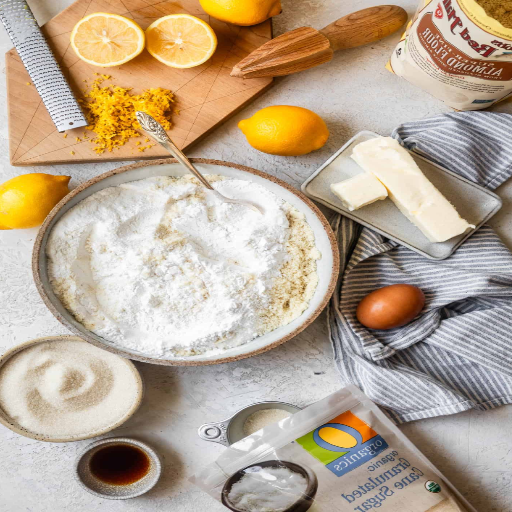
Ingredients Essential to Lemon Biscuit Dough
To prepare the perfect lemon biscuit, one must work with the finest ingredients that can bring out the flavors and textures. These include:
Lemons: The lemon juice is freshly squeezed, and the lemon zest is finely grated, both of which are essential elements in the dough. These provide a fresh, citrus taste and a natural scent that no artificial substitute can ever replicate. The essential oils from the zest also impart a slight bitterness that balances the sweetness of the dough.
The Flour: Acting as a versatile and dependable base, all-purpose flour affords structure and stability to the biscuits. For gluten-free or choices, almond flour or oat flour maintains the desired crumb texture.
The Butter: Using good-quality unsalted butter provides richness and an exponent-producing, flaky texture. Leaving butter unsalted also allows for the regulation of salt content, so it does not overshadow other flavors but instead achieves harmony.
Granulated Sugar: The moderate use of granulated sugar sweetens the dough, allowing the slight tartness from the lemon to shine through. Other variants, such as organic cane sugar or coconut sugar, can be considered if you want to add depth or perhaps health benefits.
Baking Powder: This is a necessary aspect responsible for the light and airy biscuit texture, superbly lifting the dough throughout baking. Take care to use fresh baking powder; otherwise, the results can be inconsistent.
Eggs: They bind the ingredients together, preventing the dough from unfolding and contributing to the final texture. Eggs also impart a nice golden color to the baked good. If you wish to use the eggs’ plant-based alternatives, a flaxseed meal and water mixture can be an option.
Salt: A pinch of salt elevates the flavor, counterbalancing the sweetness and acidity. If you want to build upon standard table salt, consider using sea salt or Himalayan pink salt instead.
Optional Add-Ins: To temper, poppy seeds or shredded coconut can be added for extra texture and flavor of the cookie. Another option is to add a touch of vanilla extract to lend an aromatic depth to these biscuits.
All of these elements can be combined to achieve the perfect balance of sweet, tart, and rich, charming everyone from casual consumers to aficionados. Attention to measuring and mixing levels will go even further to ensure every bite is properly balanced in terms of flavor.
The Role of Lemon Juice in Flavor
In both sweet and savory recipes, lemon juice enhances flavors with its bright acidity and distinct citrus notes. That acidity acts to counterbalance the sweet elements by cutting through heavier flavors and engaging in a dynamic interplay with the palate. Additionally, in baked items such as biscuits or cakes, lemon juice imparts a fresh, zesty fragrance. In addition to reacting with baking soda or baking powder, it aids in dispersing the rising agent uniformly throughout the mixture, helping the batter rise evenly and become light and fluffy.
Another function of lemon juice is to preserve the natural flavor of ingredients. For instance, it slows oxidation so that fruits such as apples and pears do not turn color away from their appealing natural hues. The juice can be used in marinades and dressings to tenderize proteins and in conjunction with other flavor components. With the capable addition of lemon juice to a dish, a cook can truly enhance and unify brightness in a well-rounded culinary profile.
Choosing Butter for Lemon Butter Biscuits
Selecting the right kind of butter is essential in perfecting the texture and flavor of lemon butter biscuits. Lagging a bit on the side of being richer and flakier in consistency, good-quality unsalted butter is most often recommended. It is always good not to add salt to the butter, as this allows for a little more control over the salt level in your biscuits, ensuring the lemon flavor stands out. On the contrary, European-style butter, with its higher butterfat content—approximately 82%—can be used to enhance richness further and develop a tender crumb.
Whenever you are butter shopping, opt for fresh ones with the fewest additives possible so that you can enjoy the most natural taste. When incorporating the butter into the dough, it must be cold to achieve a truly flaky texture. Others will infuse the butter with lemon zest before mixing it in with their lemons to intensify the citrus aroma of the biscuit. One must ensure utmost care in selecting the best butter and controlling its temperature when making delicious butter biscuits. These two factors are a recipe for an aromatic and flavorful batch of biscuits.
Step-by-Step Guide to Making Lemon Biscuits
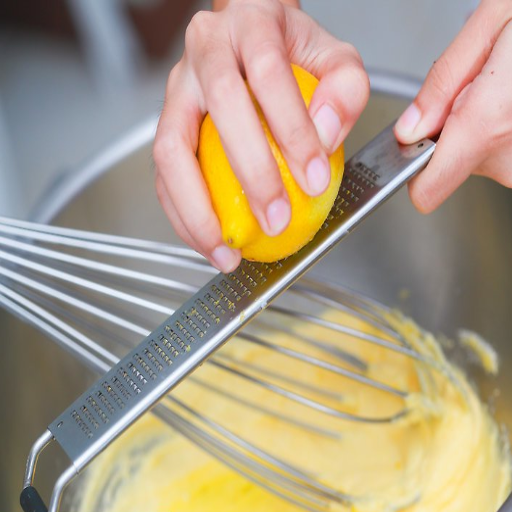
Mixing Biscuit Dough
Generally, the dry ingredients should be mixed in a large bowl before the wet ingredients are added, ensuring the dough is perfectly balanced. The dough uses all-purpose flour as its main base, with baking powder and a pinch of salt added in precise proportions to provide an even rise and enhance flavor. Being on the sweeter side means adding granulated sugar, but the amount largely depends on how sweet you want the biscuits to be.
Afterwards, cut the cold unsalted butter into small cubes and combine the butter and flour mixture using your fingers or a pastry cutter. The mixture should resemble crumbs with little pea-sized specks of butter distributed evenly throughout the flour. This step is crucial for achieving flaky biscuits.
The wet ingredients, which included milk or buttermilk along with a bit of fresh lemon juice to highlight the zestiness, were whisked together separately. The moist mixture was then folded gently into the dry ingredients, being careful not to overmix. Overmixing produces heavy biscuits rather than light ones. The mixture comes together smoothly, with a slight stickiness to the touch, but remains manageable enough to be rolled or shaped.
Baking About Fluffy Lemon Biscuits
The dough must be handled carefully to create fluffy lemon biscuits. Once the dough is ready, it is turned over onto a lightly floured surface, where it is gently patted into a 1-inch-thick rectangle. Rolling the dough very thinly causes it to bake with less rise. The cleanest cuts are achieved by using a biscuit cutter with minimal pressure on the dough, thereby preventing the layers from being compressed. Flour on the cutter between each cut helps prevent sticking and ensures consistent shapes.
Next, set the biscuits very close to each other on the baking sheet lined with parchment paper. When placed closely, the edges support one another during rising, resulting in taller and fluffier biscuits. Place the rack in the center of the oven and preheat it to about 425 degrees Fahrenheit (220 degrees Celsius). Rapid heat at high temperatures will help the biscuits rise fast and develop those flaky layers. For a glossier finish, brush the tops with a bit of melted butter before baking.
Once baked, cool the biscuits for a few minutes before serving. Their soft, tender texture will do wonders with just a drizzle of honey, a spoonful of cream, or a tart lemon glaze to infuse them with an extra pop of flavor. With these techniques followed to the letter, the biscuits will always be light, airy, and packed with zestful goodness.
Tips for Perfectly Shaped Lemon Cream Biscuits
Cold Ingredients: These include butter and cream, which are kept chilled inside the fridge before being added to the dough. The cooler the ingredients, the more steam they generate during baking, a good factor for flaky yet tender biscuits.
Gentle Handling of the Dough: Overworking the dough can result in hard biscuits. Avoid physically handling too much when mixing or shaping to maintain an airy texture.
Use a Sharp Cutter and Cut Straight Down: Cutters should be sharp, and the pressure should be only straight down. Any twisting may cause the edges to pinch together, preventing the biscuits from rising properly.
Chill the Biscuits before Baking: Refrigerate the biscuits for 10-15 minutes after shaping, ensuring the butter remains cold and helps the biscuits retain their shape during baking.
Bake at High Heat: Preheat the oven to at least 425°F (220°C) to help the biscuits rise well and develop a golden crust. Baking at lower temperatures yields flat biscuits and uneven results.
Use Parchment Paper or Non-Stick Mats: Line the baking sheet with parchment paper or a silicone mat to prevent sticking and allow the heat to brown the bottom evenly.
Keep Biscuit Edges Close Together: Place the biscuits on the pan so that their edges just touch each other. This provides for even rising as the heat circulates through each biscuit.
Measuring Ingredients: Weigh and accurately measure the flour, butter, cream, and other ingredients to ensure perfect ratios, as consistent results depend on it.
Follow these tips for your lemon cream biscuits, so they will be in good shape and pretty enough to eat.
Serving Suggestions for Lemon Biscuits

Pairing Lemon Biscuits with Beverages
Lemon biscuits are a versatile treat that pairs well with various beverages. The classic beverage pairing with these biscuits is a lovely cup of Earl Grey tea. The very faint citrusy tinge in the tea was intended to complement the harsher lemon-lime punch of the lemon biscuits. And, of course, a coffee break takes a twist here: a light roast or coffee with milk will cool down the pronounced citrus sweetness and complement the buttery texture of the biscuits.
On the lighter side, freshly squeezed lemonade can provide a refreshing citrus flavor, complementing the biscuit’s lemon notes. Also, herbal teas, such as chamomile or mint, soothe the palate against the zesty citrus burst of the biscuit. Going sparkling? Let your lemon biscuits sparkle with your favorite sparkling wine or Prosecco during brunch or tea parties, bringing flavor elevation and a celebratory finale hand in hand.
Creative Serving Suggestions for Homemade Lemon Biscuits
These lemon biscuits are wonderfully versatile and also a great way to experiment with flavor combinations and presentations. For the savory angle, a dollop of whipped herb butter or a smear of goat cheese with fresh thyme could be just perfect, as these earthy and creamy counterparts gently balance the bright citrus notes of the biscuit, making them suitable for either casual fare or chic hors d’oeuvres.
Transforming these lemon biscuits into lovely dessert sandwiches should thrill any dessert lover. Fill them with mascarpone cheese, honey, or fresh berry compote. This dual effect both gently heightens the biscuits’ inherent tartness and introduces an extra layer of richness and sweetness, creating a refined yet down-to-earth treat.
For those who want to make a visual impression, consider adding edible flowers to the side or setting the biscuits on a decorative platter. These small touches can elevate the dining experience and turn your lemon biscuits into the spotlight of a cherished occasion. Whether made for breakfast, tea time, or dessert, these serving variations bring an extra level of shine to any setting your homemade lemon biscuits may find themselves in.
Storing and Reheating Lemon Butter Biscuits
Proper storage and reheating methods will allow your lemon butter biscuits to retain their excellent flavor and texture a couple of days later. Also, ensure the biscuits cool completely before storing, as trapped moisture can cause them to become soggier. Once cooled, the biscuits can be placed in an airtight container with layers separated by parchment paper to prevent them from sticking together. Stored at room temperature, the biscuits can remain fresh for up to 3 days. If one would like to keep them for longer than that, freezing is an option: place the biscuits in a freezer-safe bag or container, and they will last up to a month, maintaining their properties.
While reheating, avoid applying excessive heat, as this can dry out the biscuits. Typically, you want to set your oven to 300°F (150 °C), loosely wrap your biscuits in aluminum foil, and warm them for about 10 to 15 minutes. If the biscuits are taken out of the freezer, let them sit at room temperature for about 30 minutes before baking. To keep it quick, there’s also the microwave method: wrap a biscuit in a damp paper towel and nuke it for 10-15 seconds to regain some of that softness. This way, your lemon butter-biscuit treat stays as soft and full of flavor as they were when it was freshly baked.
Variations and Creative Twists on Lemon Biscuits
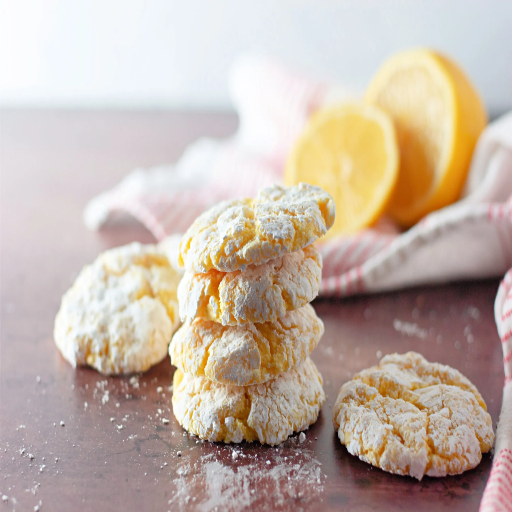
Another Set of Citrus Flavors to Explore
Learning all about these cake flavors takes it up a notch for your plain biscuit. If sweeter is your choice, sprinkle in some grated orange zest, along with just a tiny bit of fresh orange juice, into your biscuit dough. This is perfect for drizzling with either dark chocolate or a light glaze made from powdered sugar and orange juice.
For all of you who love lime for zingy excitement, lime zest and a few drops of lime juice work beautifully to give a tropical injection of flavor. Such lime biscuits, being the new in crowd, would be fantastic with coconut-based toppings or fillings to enrich the treat’s texture.
Grapefruit, with its excellent balance of sweet and bitter, is quite an exciting option. The zest of a grapefruit, along with a spoonful of grapefruit juice, will add a touch of sophistication and tang to the biscuits. This variation can be enhanced with a thin glaze of grapefruit juice and honey for a stellar presentation.
Each one of these citrus substitutions will impart a distinct flavor profile while simultaneously infusing vibrant aromas and colors into the baked treats, making for a complete joy to behold and taste. Experimenting with these fruits gives you the power to customize your biscuits according to your taste, alongside getting some great, never-awkward-for-an-occasion recipes.
Vegan and gluten-free lemon biscuit recipes
Vegan and gluten-free lemon biscuits are another tasty treat. The substitutions to the recipe are such that the flavor maintains its moistness, zing, and crumbling delight, making it suitable for any event.
For an easy vegan option, regular butter is replaced with a plant-based substitute, such as coconut oil, vegan margarine, or unsweetened applesauce. For a dairy-free version of buttermilk, consider using almond milk, oat milk, or soy milk, combined with a splash of apple cider vinegar. Regarding the gluten-free flours, the choice can be almond flour, oat flour, or a mixture of gluten-free all-purpose flour and xanthan gum to guarantee the property’s structure and texture.
Use fresh lemon juice and zest to add a punch of freshness to the lemon flavor, as these ingredients will amplify the citrus aroma while also brightening up the dough. Maple syrup, or agave syrup in some cases, can be used as a sweetener to add sweetness and flavor if the sweetener in this recipe is to be avoided entirely.
Bake for around 10–12 minutes at 350°F (175°C), turning them golden brown; ensure they become crispy on the outside and remain soft on the inside. These vegan and gluten-free lemon biscuits are perfect as an afternoon snack, served with a dollop of dairy-free whipped cream or an extra layer of lemon glaze for added indulgence. Altering ingredient quantities and adding ingredients like poppy seeds or shredded coconut provides an opportunity to personalize these treats to each individual’s taste and creativity.
Adding Additional Ingredients for Unique Flavors
Crafting unique flavor profiles is a joy in its own right in the world of baking, and these adaptable lemon biscuits can provide the perfect base to explore fabulous ingredient variations. Consider folding in finely chopped pistachios, almonds, or toasted walnuts. Apart from contributing texture, these nuts impart a subtle flavor complexity that pairs elegantly with the tart lemon. Add a little savory edge with a slight sprinkling of rosemary or thyme—the herbal undertone will elevate the biscuits to a new level beyond your typical sweet snack.
For an extra sugary touch, dried fruits such as cranberries, apricots, or golden raisins can bring a nice chew and occasional bursts of natural sweetness. Alternatively, a scattering of dark or white chocolate goes quite well with the tart lemon flavor. Edible flowers with dull colors, such as dried lavender or calendula petals, can also be added to the dough for a pretty yet perfumed finish. These artistic blends of ingredients make the biscuits uniquely yours and a gourmet hit for any occasion.
Conclusion: Mastering the Lemon Biscuits Recipe

Final Thoughts on Making Lemon Biscuits
Making lemon biscuits has always been an enjoyable experience for me, and I hope you will get the same feeling. The luscious lemony taste and customization of this recipe set it apart from all others. You may want to keep it the classic way or add chocolate chips, nuts, edible flowers, or whatever else suits your fancy-the endless possibilities enthrall me. What I love most about this recipe is that anyone, whether a beginner or an expert, can easily make it, and yet it crowns its creator with a gourmet feel.
The secret to truly great biscuits is striking a delicate balance between flavor and texture. Fresh and good-quality lemons will enhance the taste, while excessive mixing will stiffen the dough and defeat its very nature as tender and crumbly biscuits. Feel free to adjust the recipe according to your liking; after all, that form of versatility is what makes this dish so enjoyable. From less sugar to more, or some not-so-expected add-on, making the recipe your own always brings forth something remarkable.
Lastly, I’m convinced these lemon biscuits serve every occasion: wonderful as a gift; good to eat with your afternoon tea; and perfect as a dessert for a party. These biscuits will brighten any day with flavor and cuteness. I hope you will enjoy making and giving them away as much as I do. It is an easy and hearty way to live a little and make a bunch of people smile.
Encouraging Readers to Experiment with Their Recipes
I’ve always viewed recipes as merely a starting point, the sort of base where your culinary creativity can take hold. Back in the days of my baking apprenticeship, I followed recipes quite religiously. As I’ve grown, I’ve come to enjoy making little adjustments here and there, perhaps for the sake of personal preference or simply based on what I have on hand. Possibly changing the lemon zest to orange zest in the biscuit, or adding just a hint of spice with cinnamon or ginger, or even experimenting with the type of flour used, such as whole-wheat flour or all-purpose flour, to achieve a particular character in the dough. Each variation presents an opportunity to come across something that is distinctly your own.
I also urge you to consider how the recipe can be adjusted for the season or occasion. Being able to sprinkle some fresh fruit, nuts, or even a splash of favorite extract onto an old-time recipe suddenly makes it fresh and exciting! Consider some wild combinations, don’t be shy—some of my finest discoveries resulted from me wildly trying flavors I honestly had no clue would go together.
In the end, the kitchen is a playground for creativity, and there is no right or wrong way to make a recipe your own. Learning to trust your instincts and having fun with the process is just part of the reward in baking itself. Who knows? Perhaps you will end up with a variation so good it will be your signature dish.
The Art and Joy of Baking Lemon Biscuits at Home
Baking homemade lemon biscuits is indeed one of my favorite ways to fill the kitchen with happiness and sunlight. Using simple ingredients like flour, butter, sugar, and lemons to create a wonderfully fragrant atmosphere and delicious result is so satisfying. This blend of science and art truly brings the kitchen to life, especially when the zesty aroma of fresh lemons fills the air during baking. It is like bottling sunshine that can be tasted in a solitary bite.
The joy lies not just in the finishing stage, but also in the creativity and freedom of customizing a recipe. Sometimes I experiment with a hint of vanilla for warmth, or with coarse sugar sprinkled on top, so that there’s a lovely crunch. I also like the idea of a light lemon glaze to drizzle over the biscuits, adding a tangy sweetness. No matter how different, these biscuits always put a smile on the face of everyone who gets to taste them. Nothing comforts like the warm satisfaction derived from having devoted care and creativity to baking from scratch.
Reference Sources
-
Lemon Butter Biscuits – Picky Eater Blog
Offers a secret tip for enhancing the flavor and texture of lemon butter cookies. -
Lemon Biscuits – Tara Teaspoon
Highlights the role of fresh lemon juice and baking techniques for light and fluffy biscuits. -
The BEST Lemon Cookies – Live Well Bake Often
Provides a detailed recipe with tips for achieving the perfect lemon glaze. -
Easy Lemon Cookies Biscuits – YouTube
A simple video tutorial for making crunchy and flavorful lemon biscuits. -
Lemon Biscuits (Lemon Glazed Cookies) – Sugar Salt Magic
Explains the step-by-step process, from blending lemon sugar to rolling the dough.
Frequently Asked Questions (FAQs)
What are the ingredients for lemon biscuit recipes?
Flour, baking powder, sugar, butter, fresh lemon zest, and juice are some of the basic ingredients needed to make great lemon biscuits. Additionally, you may want to keep some icing sugar on hand if you wish to drizzle it over the biscuits. A biscuit cutter is also quite helpful in cutting out biscuit shapes neatly. Check out your kitchen for parchment paper to line the baking sheet.
How do you make lemon butter biscuit dough?
Lemon butter dough in the biscuit preparation process begins with combining the dry ingredients, such as flour and baking powder, in a large bowl. Next, cream the butter and sugar until they are light and fluffy, then mix in the lemon zest and juice. Slowly introduce the dry ingredients until a tender crumb is formed. If the dough feels sticky, a little extra flour may be added to aid in shaping. After mixing, keep the dough in the fridge for about half an hour to make it easier to handle.
What are some serving suggestions for the lemon biscuits?
Lemon biscuits, being versatile, can be served in different ways. They can be enjoyed during afternoon tea with a cup of tea and lemon curd for a bit of tartness. Otherwise, you can simply eat them as they are or sprinkle them with icing sugar. For a bit of sophistication in dessert, serve with whipped cream or lemon icing. Additionally, these biscuits are perfect for a picnic or can be put together as a sweet homemade gift in a cute box.
Can I replace fresh lemon juice with lemon extract?
Yes, you can replace fresh lemon juice with lemon extract, but bear in mind that the flavor might differ slightly. Use approximately one teaspoon of lemon extract to get a strong lemon flavor. On the other hand, fresh lemon juice and zest bring out a more vibrant and intense lemon profile favored by most bakers. If you decide to use lemon extract alone, perhaps consider adding some fresh lemon zest for an extra flavor boost.
How can I keep my lemon biscuits flaky?
Handling the dough gently and not overworking it will produce flaky lemon biscuits. Butter should be cold when mixing it with the dry ingredients, so there can be pockets of butter that help the biscuits rise while becoming flaky. Always use a light hand when shaping the biscuits, and perhaps roll the dough to about half an inch before cutting. The biscuits should also be chilled after cutting to keep their structure and promote flakiness. Finally, bake the biscuits just until they turn a light golden color.
What about storing lemon biscuits?
Homemade lemon biscuits should be stored in an airtight container at room temperature to maintain their freshness. They should stay fresh from 3 to 5 days typically. If they need to keep fresh for longer, they can also be frozen. Lay the chilled biscuits in a single layer on a baking tray and freeze until they’re solid. Afterward, transfer all of them into a freezer bag. When ready to eat, these biscuits should be left at room temperature to thaw or warmed slightly in the oven to make the best of fresh-baked coating.
Related Posts
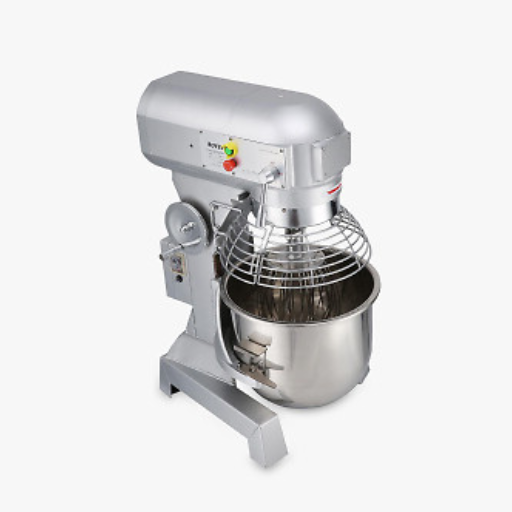
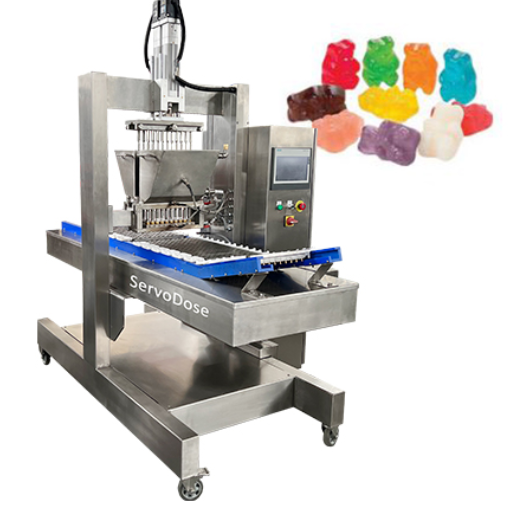



Blog Categories
Popular Blog Tags

Shanghai Fude Machinery Manufacturing Co., Ltd is a leading manufacturer of top-notch gummy and cookie making machines with more than 15 years’ experience in the industry. We provide creative equipment that ensures accuracy and speed while sharing intelligence with food producers. Shanghai Fude remains to be one of the most reliable companies for food machinery because of its dedication to perfection.




